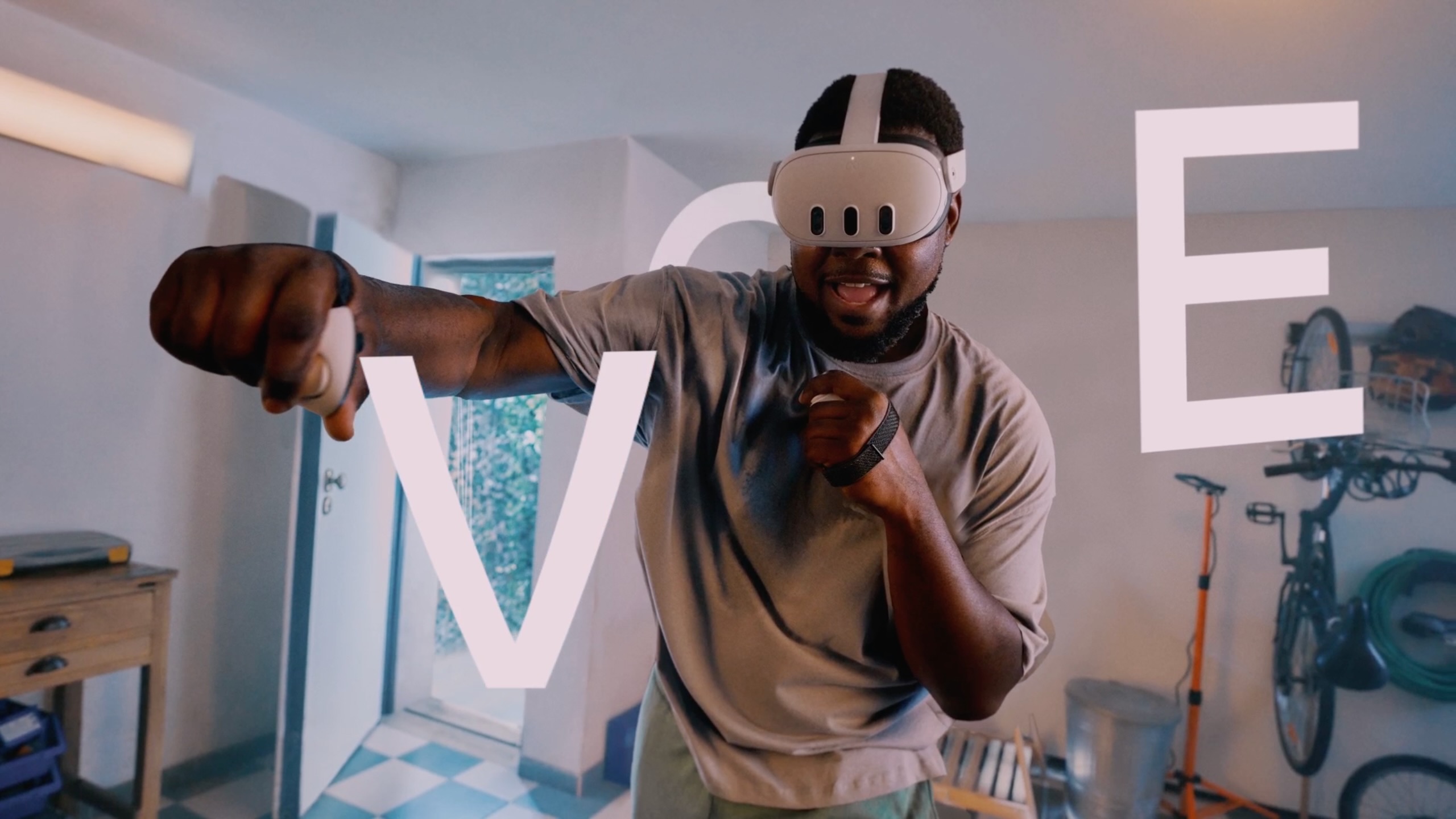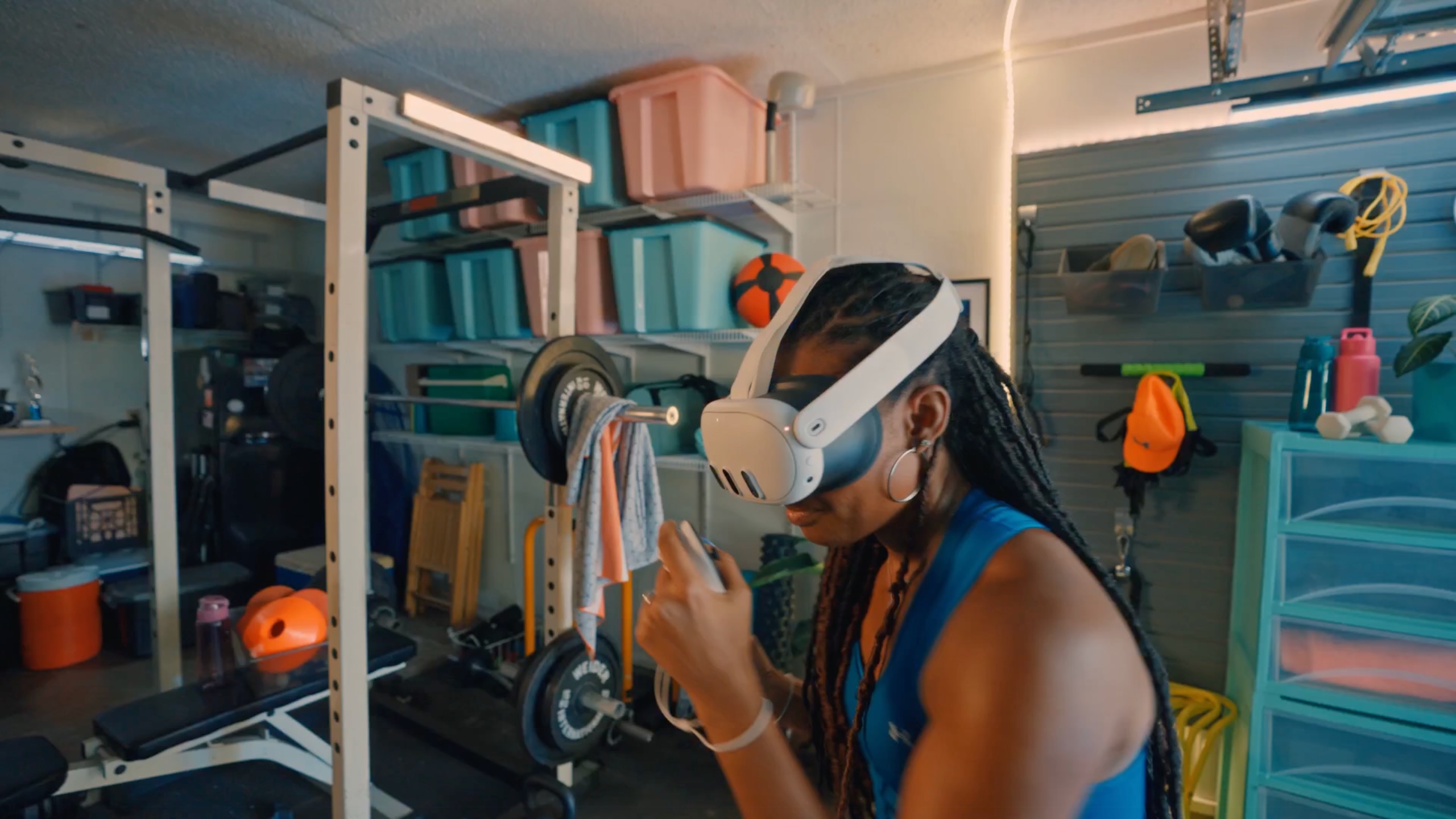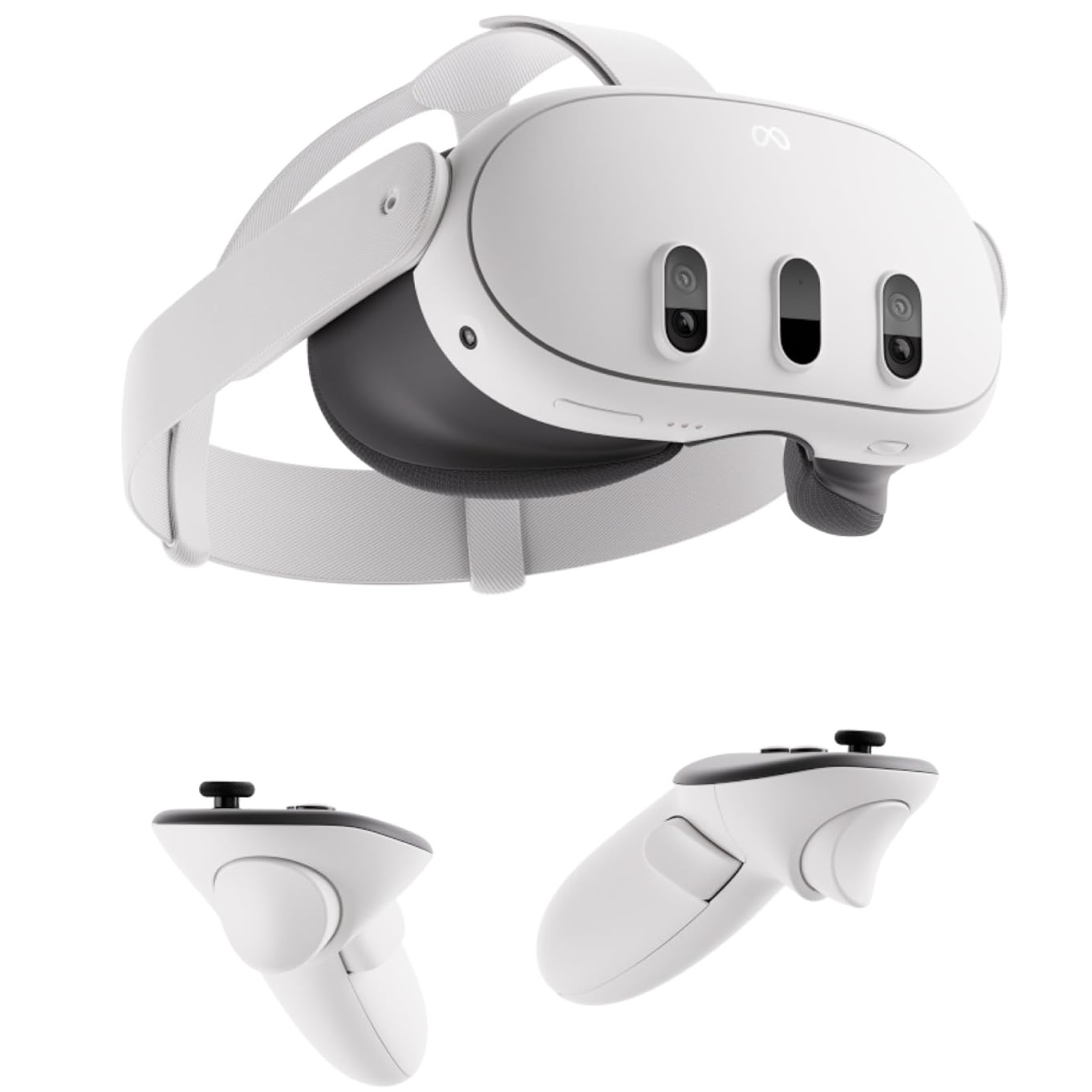Quest 3 will succeed at fitness where the Quest 2 fell short
Mixed reality can enable in-headset HIIT training in a way that virtual reality never could.

At Meta Connect 2023, most people who tried the Meta Quest 3 were blown away by the next-level mixed reality. Having tested it myself, I did appreciate its wall-shattering demos and high-resolution passthrough. But what I'm most excited about is how developers can use the Quest 3 to make VR fitness training much more viable than before, thanks to mixed reality.

In his weekly column, our Senior Editor of Wearables and Fitness Michael Hicks talks about the world of wearables, apps, and fitness tech related to running and health, in his quest to get faster and more fit.
One of the most popular use cases for the Quest 2 is at-home fitness, transporting you to fun worlds so you don't get bored burning calories. Meta literally had to fight the FTC to acquire Supernatural, a fantastic VR workout app, because the agency felt it would give the company a VR fitness monopoly and leave rivals scrambling to sell headsets without it.
I personally tested the Quest 2 as a main fitness device over the course of a month earlier this year. It ultimately didn't work for me because, well, I can burn more calories running, or even power walking, than with controller swipes and rapid movements within a narrow circle — without the constant fear of smashing into something because I don't have a large enough dedicated space for VR.
The Meta Quest 3 already solves that last problem. In a Meta Connect demo booth, I tested the new MR mode in Les Mills Bodycombat, one of our favorite Quest exercise games. It essentially preserves the front 180º FoV of the VR experience but keeps your back, sides, and ground visible via passthrough, so you're aware of nearby furniture and people with a quick glance.
When my head or hands drifted toward the front edge of my Guardian boundary, I instantly saw a clear view of the booth and Meta employee in front of me; once I withdrew, it returned just as quickly to a VR-only view. The new Snapdragon XR2 Gen 2 and extra RAM, which makes Quest 3 games look so much better, also make passthrough more responsive. That, in turn, makes working out in VR much safer.

The initial wave of Meta Quest 3 games and enhancements, like Les Mills' limited MR and FitXR's VR-only Zumba studio, show the current limit for how far the Quest 3 can go to improve games that were designed for VR. The game design must create an immersive world that blocks out your surroundings, so you can't naturally incorporate MR into them except in the areas you don't normally look.
But brand-new mixed-reality fitness experiences are the one type of MR software that I genuinely hope could be better than the VR equivalent.
Get the latest news from Android Central, your trusted companion in the world of Android
Why? Because when it comes to at-home workouts, there's only so much you can do in VR without spatial awareness of your floor and free hands. Fundamental HIIT moves like burpees don't work when the headset can't possibly track where the rest of your body will jut out of the Guardian barrier; you're liable to break something or hurt yourself with an ill-timed drop.
You can't safely hold and lift weights, even small ones, because you can't actually see them — and you're probably holding Touch controllers anyway.

The Quest 3 has a depth sensor for better hand tracking and visual recognition of how close or far you are from something. Crisp full-color passthrough ensures you can check where your yoga mat is before dropping down to do some push-ups — so long as you're careful not to smash the headset into the floor — or walk over to your weight rack and grab the right size. And it even has better venting than the Quest 2 to hopefully prevent your face from getting too sweaty.
My main question is whether or not the Quest 3's built-in accelerometer or cameras have the smarts to recognize specific body-weight workout motions like a fitness smartwatch can. But in theory, you could follow a fitness training video in the headset and see real-time heart rate data and your current score in the corner as you switch between punching targets and completing planks and crunches.
My second question: will developers make mixed-reality-only experiences? Because the Quest 2's black-and-white passthrough falls short of the Quest 3 with 10X fewer pixels, an MR exercise app would be both nauseating and unsafe, defeating the purpose. So, any MR exercise app couldn't target the 20 million Quest 2 owners out there.
So, really, whether or not the Quest 3 lives up to its MR potential as a cross-training tool depends on how well it sells since a larger audience incentivizes developers to target it alone. For now, my hope is that Meta is already taking advantage of its Supernatural ownership to start making its own Quest 3-exclusive MR workouts.

Michael is Android Central's resident expert on wearables and fitness. Before joining Android Central, he freelanced for years at Techradar, Wareable, Windows Central, and Digital Trends. Channeling his love of running, he established himself as an expert on fitness watches, testing and reviewing models from Garmin, Fitbit, Samsung, Apple, COROS, Polar, Amazfit, Suunto, and more.

